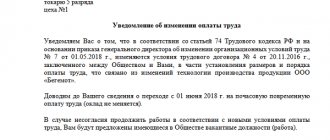The International Statistical Classification of Diseases and Related Health Problems (ICD) is a normative document that is designed to ensure uniformity of data on public health and the epidemiological situation both in a single country and throughout the world as a whole. The transition to the use of the International Classification of Diseases, Tenth Revision (ICD-10) took place in the Russian Federation from 01/01/1999, in accordance with Order of the Russian Ministry of Health No. 3 of 01/12/1998.
The use of names of diseases and conditions in accordance with the International Classification of Diseases is used in primary medical documentation, including medical records (outpatient, inpatient, etc.). In addition, the International Classification of Diseases is used in many medical documents related to reporting and statistics. Examples include:
- 025-2/u-88 “Statistical coupon for registration of final updated diagnoses”;
- 025-1/U “Coupon for a patient receiving medical care on an outpatient basis”;
- 025-8/u-95 “Unified outpatient card”;
- 025-9/u-96 “Coupon for a completed case of temporary disability”;
- Medical death certificate according to form No. 106/u-08;
- Medical certificate of perinatal death in form No. 106-2/u-08.
ICD-10 classification
ICD-10 consists of three volumes:
- Volume I of the classification includes a complete list of headings and subheadings, the code numbers of which include designations from A00.0 to Z99.9. The diseases included in this volume are divided into 21 classes, each of which is subdivided into blocks of homogeneous three-character headings that are interconnected;
- Volume II is a guide to the use of ICD-10;
- Volume III includes an Alphabetical Index to the full list of headings contained in Volume 1 and is a significant addition to it. The alphabetical index includes almost all diagnostic terms that are currently used in medical practice.
The classification is based on a single code list of three-digit headings, each of which can be further subdivided into four-digit subcategories. The first three characters of the code form a category that identifies a specific disease. The fourth digit always follows the decimal point, and possible numbers range from A00.0 to Z99.9. The headings are a key element, since statistics on the causes of mortality and the spread of diseases are based on them.
There is a separate letter U (codes U00-U49), which is intended only to temporarily designate new diseases of unknown etiology or for use in emergency situations. For example, in connection with the spread of a new coronavirus infection, codes U07.1 “COVID-19, virus identified” and U07.2 “COVID-19, virus not identified” were introduced in ICD-10.
Codes U50-U99 are used for research purposes to test an alternative classification in a special project. Currently, two codes are used: U82 “Resistance to betalactam antibiotics”, which is used as an additional code for classes B95-B98, to identify agents resistant to treatment with betalactam antibiotics and code U83 “Resistance to other antibiotics”, also used as an additional code for classes B95-B98, to identify agents resistant to treatment with other antibiotics.
ICD-10 is divided into 21 classes, the first character of the code is the letter that corresponds to a particular class, except for the letter D, used in class II "Neoplastic" and class III "Diseases of the blood and hematopoietic organs and selected disorders involving the immune mechanism." And also the letter H is used in several classes: in class VIII “Diseases of the ear and mastoid process” and in class VII “Diseases of the eye and its adnexal apparatus.”
Classes I-XVII refer to diseases and other pathological conditions; class XIX - to injuries, poisoning and some other consequences of external causes; class XX – to external causes of morbidity and mortality; class XVIII - symptoms, signs and deviations from the norm identified during clinical and laboratory tests, not classified in other headings; class XXI – factors influencing the health status of the population and visits to health care institutions.
The main significance of ICD-10 is the systematization and classification of diseases and injuries that have an official diagnosis. However, often a patient comes to a medical institution without having a disease, so the ICD provides for the possibility of processing symptoms, complaints and social circumstances that can be indicated instead of a diagnosis in the medical documentation. It is for this purpose that ICD-10 has class XXI “Factors influencing the health status of the population and visits to health care institutions” and class XVIII “Symptoms, signs and deviations from the norm, identified during clinical and laboratory tests, not classified in other headings.”
For example, class XVIII includes symptoms, signs and deviations from the norm identified as a result of clinical, laboratory or other studies, as well as ill-defined conditions in relation to which a diagnosis classified in other headings cannot be indicated. Rubrics in a given class typically include conditions or symptoms that may apply to more than one disease.
Conditions included in categories R00-R99 include:
- The presence of symptoms and signs for which no cause can be determined;
- Making a preliminary diagnosis that cannot be confirmed due to the patient’s failure to appear for further examination and treatment;
- Inability to carry out more accurate diagnostics to make a diagnosis;
- Referring the patient to another medical institution for a final diagnosis;
- Symptoms for which additional information has been provided are not of value in themselves for providing medical care.
Class XXI is intended for cases when the diagnosis is not a disease, but an injury or other external cause or other circumstances. This request usually occurs in the following cases:
- A person who is not currently sick applies to a health care institution to receive minor medical care or for services in connection with a current condition. For example, vaccination or donation.
- When there are circumstances or problems that affect health, but at the moment they do not themselves constitute an injury or illness.
The class under consideration includes, for example, such blocks as contacting a health care institution for a medical examination or examination; contacting a health care institution in connection with circumstances related to reproductive function; Potential health hazards related to personal or family history and certain health conditions.
The ICD-10 classes we examined can be used to classify data indicated in columns such as “reason for hospitalization,” “reason for seeking medical help,” “condition for which treatment was carried out,” and so on.
All classes in the ICD are divided into corresponding blocks of three-digit headings. These headings are arranged in order of importance for the health care system of conditions, from the numbering of the most important conditions to the least important, that is, other, unspecified diseases included in this block.
Four-digit subcategories are used to identify different localizations or varieties of one disease, or for individual diseases, if a three-digit category is intended for a group of diseases.
Fifth digits are used if there is a need to subdivide disease states along an axis that differs from that used at the four-digit level. For example, they are contained in class XIX - to indicate open and closed fractures, intracranial, intrathoracic and intraperitoneal injuries with or without an open wound; in class XX - to indicate the types of activities of the victim at the time of the incident.
Thus, the ICD-10 classification is more complete and extensive and provides more opportunities for correctly indicating the diagnosis or other condition of a person seeking medical help.
Some features of disease coding according to ICD-10
ICD-10 has more features that make it more flexible in coding and analyzing conditions. When working with ICD-10 in the field of statistics and health care, in particular, it is provided:
Double coding of some conditions, in which the cross and asterisk symbol system is used
The main code is the one marked with a cross and reflects information about the existing disease. The second code is marked with an asterisk and reflects information about the specific manifestation of the disease in an organ or part of the body.
This designation was caused by the need for the most complete collection of statistical data relating to the provision of medical care by doctors of a particular specialization. However, only the main code is used in state statistics of causes of death and morbidity of the population.
It should be separately noted that the code with an asterisk cannot be used independently; it must always be preceded by the main code.
For example, meningitis in a patient with tuberculosis should be coded as A17.0+ G01. In this case, only tuberculosis (A17.0) will be included in official statistics. But in statistical work on infectious diseases, code G01 can be used.
Sections of long-term consequences of painful conditions
Although late-effect categories are available, ICD-10 recommends that, whenever possible, they be coded using the normal code from the relevant part of the classification rather than late-effect codes. For example, “Pulmonary fibrosis is a late consequence of tuberculosis” could be coded as “Post-inflammatory pulmonary fibrosis (J84.1)” or “Late consequences of pulmonary tuberculosis (B90.9)” as the initial cause.
Possibility of using two ICD codes to describe a patient’s disease
To this end, there are notes in the relevant classification headings where this can be applied.
In particular, a code from Class IV (Endocrine, Nutritional and Metabolic Disorders) indicating hormonal activity may be added to the corresponding neoplasms in Class II (Neoplasms). Such coding may be possible in the case of certain hormone-producing neoplasms
Or, for conditions classified in F00-F09 (Mental and Behavioral Disorders, Class V), a code from another class may be added to indicate the cause, that is, the underlying disease, injury, or brain lesion. This coding is applicable in the case of catatonic mental disorder that develops after severe traumatic brain injury.
Another example is that for coronary heart disease and cerebrovascular diseases classified in class IX, a code from the same class may be added to indicate concomitant hypertension. Alternatively, if the patient's condition is due to exposure to a toxic substance, a Class XX code may be added to identify the substance.
Possibility of making a syndromic (or even symptomatic) diagnosis
In some cases, a lack of urgency in providing medical care or other factors (such as insufficient technical support for diagnostic equipment) do not allow the doctor to make a definite diagnosis. Thus, it can record the presence of certain symptoms or syndromes, but there are many pathologies that can cause them, and it is more than difficult to speak in favor of one of them, discarding the others. This situation often arises in the practice of emergency doctors, as well as among workers at paramedic stations who receive patients in remote and sparsely populated areas.
Conditions forcing a diagnostic search outside a medical organization, or even in a medical organization (such as a medical clinic), but with a minimum number of instruments and under extremely limited time, leads to diagnoses like “fever of unknown origin” or “coma of unknown etiology.” At the same time, ICD-10 contains codes that describe individual syndromes and symptoms. So, for example, “coma of unknown etiology” corresponds to “R.40.2 Coma, unspecified,” “fever of unknown origin” corresponds to “R.50.9 Fever, unspecified.” In this regard, the question arises: does the doctor have the right to make a syndromic or symptomatic diagnosis? According to the practical instructional and methodological manual on health statistics, approved by Rosstat Order No. 409 dated November 22, 2010, during diagnostic and treatment work, a doctor cannot always establish a clinical, so-called final diagnosis during contact. In this case, he has the right to record in the medical documentation the symptom, symptom complex or deviation from the norm that served as the reason for contacting a medical institution. However, there is an important clarification. Any diagnosis, both usual and syndromic, must fully comply with the terminology of the International Classification of Diseases.
Medical examination rules
Medical examination of patients treated for malignant neoplasms is carried out for life. This is especially significant for patients who have undergone radical treatment and entered remission. As part of dispensary observation, the following activities are carried out:
- Timely detection of relapses or metastases.
- Detection and correction of long-term complications of antitumor treatment.
- Examination of disability.
- Rehabilitation activities.
- Detection of metachronous neoplasms, the risk of which in these patients is higher than in the general population.
The frequency of follow-up examinations is determined by the clinical team. Each of these groups has its own standard of examinations, organizational and rehabilitation measures.
Book a consultation 24 hours a day
+7+7+78
General coding principles
The algorithm for encoding statistical information can be presented as follows:
- In the medical record document containing information about the disease/death, it is necessary to determine the wording of the diagnosis to be coded.
- In the formulation of the diagnosis, determine the leading term and search for it in the alphabetical index (3 volume of ICD-10).
- Having found the leading term in the index, you need to familiarize yourself with all the notes located under it.
- Then you need to familiarize yourself with all the terms indicated in parentheses or indented after the main term, until all the words in the formulation of the diagnosis are taken into account.
- Note should be taken of any cross-references found in the Index, such as “see” and “see”. Also".
- When using Volume I of ICD-10, be guided by all included or excluded terms under the selected code or under the name of the class, block or heading.
- Assign a code to the formulation of the diagnosis.
Coding of morbidity in outpatient healthcare facilities
In the current practice of outpatient health care institutions, it is accepted that all conditions and health problems identified during the contact between the doctor and the patient are subject to registration and coding.
Taking into account statistical information on morbidity in outpatient clinics is necessary for the formation of state statistical reporting of healthcare institutions.
In outpatient healthcare institutions, various statistical information is generated, providing different levels of the healthcare system, in particular:
- State level – statistics of causes of morbidity and mortality;
- Level of subjects of the Russian Federation – morbidity statistics and structure of causes of death of the population of the corresponding subject of the Russian Federation;
- Outpatient clinic – morbidity statistics and structure of causes of mortality of the population served.
First clinical group
The first clinical group is divided into two subgroups:
- Patients with suspected malignant neoplasms. Such patients are referred for a special examination to clarify the diagnosis. A maximum of 10 days is allotted for everything. If the diagnosis is confirmed, the patient is transferred to the second clinical group.
- Patients with precancerous malignancies. They are subject to treatment on an outpatient or inpatient basis. After treatment, they should be under dynamic observation for a year, with inspection intervals every 3 months. If after this time there is no evidence of a relapse, the patient is removed from the register.
Features of coding hospitalized morbidity
Statistics of hospitalized morbidity, as opposed to outpatient morbidity, are based on an analysis of morbidity for a single cause, that is, the main disease for which treatment was carried out is subject to statistical accounting.
The underlying disease in this coding is defined as the condition diagnosed at the end of the episode of care for which the patient was treated and which accounted for the largest share of resources used.
The statistical document must also indicate other diseases and conditions that occurred in this episode of medical care. Registration in the statistical card of a patient who left the hospital not only of the main disease, but also of complications of the main disease, as well as accompanying ones, helps the person doing the coding to choose the most appropriate ICD-10 code for the main disease.
If the request for medical help was associated with the treatment or examination of a patient for residual effects or consequences of the disease that are currently absent, the doctor must describe in detail such a consequence using a special rubric for coding in ICD-10 “consequences ...”, and in disease statistics, the code for the consequence itself should be used as the code for the underlying disease. So, for example, paralysis of the left lower limb after a cerebral infarction several years ago should be coded as G83.1 (Monoplegia of the lower limb).
In addition, the rubrics provided for coding the consequences of diseases can also be used in cases where there are various manifestations of the consequences of diseases, but none of them dominates in terms of severity or the need for medical care. For example, a diagnosis of “consequences of a stroke, not specified as cerebral hemorrhage or infarction” (I69.4) can be made to a patient when there are multiple manifestations of the disease, and treatment is carried out not primarily for one of them, but in general to eliminate negative consequences of the disease.
The clinical diagnosis of the patient upon discharge from the hospital should be clearly categorized, that is, there should be four sections (if any):
- underlying disease;
- complications of the underlying disease;
- background diseases;
- accompanying illnesses.
As a diagnosis, it is unacceptable to use the names of classes, blocks or groups of diseases, for example, cerebrovascular diseases, coronary heart diseases, etc. One nosological unit should act as the main disease.
As an example of the correct construction of the final clinical diagnosis, consider one where the main disease is cerebral infarction (I63.5):
Main disease: Cerebrovascular disease, Infarction (atherothrombotic subtype) of the brain in the middle cerebral artery to the right of ****20g.
Background disease: Diabetes mellitus, newly diagnosed.
Complications of the underlying disease: Epileptic syndrome. Right-sided upper lobe pneumonia. Pulmonary embolism. Acute cardiovascular and respiratory failure. Resuscitation measures in full.
Concomitant diseases: Encephalopathy of complex origin.
The statistical card of the person leaving the hospital remains in the corresponding health care institution, and the discharge summary is transferred to the clinic at the patient’s place of residence, and one copy is given to him.
Diagnostic methods in oncology
Diagnostics in oncology is a multi-stage process that involves detecting a tumor, its morphological verification, and determining the degree of its prevalence (staging).
Early detection of cancer increases the chances of successful treatment using the least traumatic methods. Here, screening programs are important, which are aimed at mass examination of high-risk patients who do not have symptoms of pathology. Screening programs differ in different countries, depending on the local morbidity structure and the financial capabilities of the healthcare system. The most relevant programs are:
- Cervical cancer screening - a gynecological examination is performed with a smear for oncocytology, colposcopy, and in a number of countries an analysis for the human papillomavirus using the PCR method is performed.
- Breast cancer screening involves regular mammograms and/or ultrasounds for women over a certain age.
- Screening for colorectal cancer. In this case, a fecal occult blood test can be used, which helps detect bleeding polyps and malignant tumors. However, a total colonoscopy is more informative. With its help, you can examine the entire large intestine, simultaneously remove polyps, or, if necessary, perform a biopsy from a suspicious tumor. Now this procedure is performed under anesthesia, which avoids discomfort for the patient.
As for symptoms, you should be wary of an unexplained weight loss of more than 10% within six months, periodic unexplained fever, general weakness, increased fatigue, and anemia.
One of the diagnostic stages is tumor detection. As a rule, this is done using radiation diagnostic methods or endoscopic technologies.
As part of radiation diagnostics, ultrasound, CT, MRI, and radiography are performed. Endoscopic technologies allow you to examine hollow organs from the inside and, if necessary, take a biopsy (tissue fragment) from a suspicious location. This is a very important point, since morphological examination is the cornerstone in making a diagnosis. It is morphology that makes it possible to determine the type of cancer, the degree of its invasion and differentiation. In modern oncology, the molecular genetic profile of the tumor is also important, since it affects the prognosis of the pathology and, accordingly, the determination of treatment tactics.

When determining the stage of the disease, a study is carried out to determine the presence of regional and distant metastases, and the degree of tumor invasion into surrounding tissue is determined. For this purpose, radiation diagnostic methods are used: CT, MRI, PET-CT, scintigraphy, etc.
Coding of causes of death
Statistics on causes of mortality are one of the main sources of information that allows us to obtain the most complete data on the health of the population. The medical death certificate must indicate all diseases and pathological conditions that led to death or contributed to its occurrence. In addition, the medical death certificate indicates the circumstances of the accident that caused the injury.
Cause of death statistics are based on the concept of the underlying cause of death, that is:
- illness or injury that triggered a chain of disease processes leading directly to death or
- the circumstances of the accident or act of violence that caused the fatal injury.
When completing a medical death certificate, the top line of Part I indicates the condition that directly led to death. On the lines below, the pathological conditions that led to the immediate cause of death are indicated one by one. The original cause should be listed last in the vertical row.
Part II of paragraph 19 includes other causes of death, that is, these are other important conditions (background, concomitant, competing) that were not associated with the original cause of death, but contributed to the occurrence of death. This column also indicates the fact of consumption of alcoholic beverages, narcotic drugs, psychotropic or other substances that were related to the death of the person.
It is not recommended to include on the medical death certificate as causes of death symptoms and conditions that occur in all deceased persons, such as respiratory and heart failure.
In the column “Approximate period of time between the onset of the pathological process and death,” opposite each selected cause of death code, indicate the period of time in minutes, hours, days, weeks, month or years, or set the value “Unknown.” Please note that the period indicated on the line above cannot be greater than the period indicated on the line below.
For statistics, the diagnosis indicated in the lowest completed line of Part I of the medical death certificate is taken. The underlying cause of death should be the most informative for the statistical analysis of causes of death, therefore, for example, coding diseases such as atherosclerosis or hypertension, the etiological role of which in the occurrence of severe health consequences is known, provides less useful information than coding such important consequences of diseases as ischemic heart disease or cerebrovascular disease.
For example, the diagnosis for chronic ischemic heart disease on the medical death certificate will look like this:
A) Left ventricular failure (I50.1) b) Other forms of chronic ischemic heart disease (I25.8) II. Essential [primary] hypertension (I10)
A detailed pathological diagnosis will be as follows:
Main disease: Large focal cardiosclerosis in the posterior and anterior walls of the left ventricle; stenosing atherosclerosis of the coronary arteries of the heart (3, IV, stenosis up to ***% in the right coronary artery). Coronary angiography, attempt at recanalization of the coronary arteries ****20
Background disease: Hypertension: left ventricular myocardial hypertrophy (heart weight ***g, left ventricular wall thickness ***cm), arteriolosclerotic nephrosclerosis.
Complications of the underlying disease: Acute heart failure: pulmonary edema, general venous congestion, liquid blood in the cavities of the heart and the lumen of large vessels. Brain swelling. Nutmeg liver.
Concomitant diseases: Atherosclerosis of the aorta (3, IV). Encephalopathy; stenosing atherosclerosis of the cerebral arteries (2.II, stenosis up to ***%).









